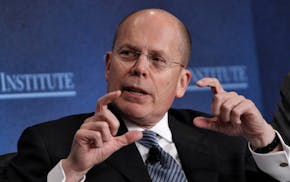About 1,000 doctors in training at the University of Minnesota are seeking to unionize in an effort to secure better wages and manageable workloads.
Physicians completing residencies or fellowships at the U filed for representation by the Committee of Interns and Residents, part of SEIU Healthcare. The union on Monday announced the action, which awaits a review by U leaders and then by the state to determine if it can be certified without a vote.
"We just don't think that great patient care should have to come at the expense of our well-being," said Dr. Sofia Haile, a family medicine resident, in a written statement. "In fact, we believe our health and our patients' health are actually intertwined. Creating a system where physicians can be our best for patients and be our best for ourselves is what we're hoping to achieve as a union."
Residents are doctors who have finished medical school but are required to complete three to five years of supervised, on-the-job training before they can practice independently. Residents make $66,000 to $76,000 per year in four-year U.S. programs, often while starting to pay off loans for their medical education, according to survey data from the Association of American Medical Colleges.
Doctors sought representation because they are working long hours, enduring burnout and dealing with paperwork hassles that reduce their time caring for patients, the union statement said. They also can't afford housing near campus under their current pay levels, so they are facing long commutes.
About 200 doctors participating in residencies at Hennepin Healthcare in Minneapolis also announced their intent earlier this month to join the same union as the U residents.
Teaching hospitals in the past leaned on residents so heavily to provide front-line patient care that the Accreditation Committee for Graduate Medical Education in 2003 stepped in and imposed limits, including capping workweeks at an average of 80 hours. The committee also required 10-hour rest periods between shifts, based on concerns that a lack of sleep contributed to medical errors and poorer patient care.
The U in a statement on Monday said it recognizes the organizing process and "values our relationship with labor-represented employees and honors its obligations" under state labor laws. The Minnesota Bureau of Mediation Services can certify the union of state employees without further action if it determines that a majority of U residents signed up.
SEIU Healthcare said unionization will give U residents "a seat at the table" as university leaders contemplate radical changes to academic medicine. The U has proposed buying its medical campus back from Fairview Health Services as its existing joint operating agreement with Fairview is set to expire at the end of next year.
The U also has proposed a billion-dollar partnership with Duluth-based Essentia Health to expand medical training statewide. Attorney General Keith Ellison is closely monitoring these negotiations because of their potential impact on health care in Minnesota and the publicly run university — which trains about 70% of the state's doctors.
Union activity among physicians is rare in Minnesota, but increased after the COVID-19 pandemic caused workforce shortages and other stresses. Allina Health's outpatient doctors joined the Doctors Council union as well as inpatient doctors at its Mercy Hospital campuses in Coon Rapids and Fridley.

UnitedHealth sues the Guardian, alleging defamation in coverage of nursing home care

Prices for international flights drop as major airlines navigate choppy economic climate
Minnesota's med spa industry rises in popularity — and with little regulation

Hundreds line up at Best Buy to nab Nintendo Switch 2, in scene like '90s opening parties

